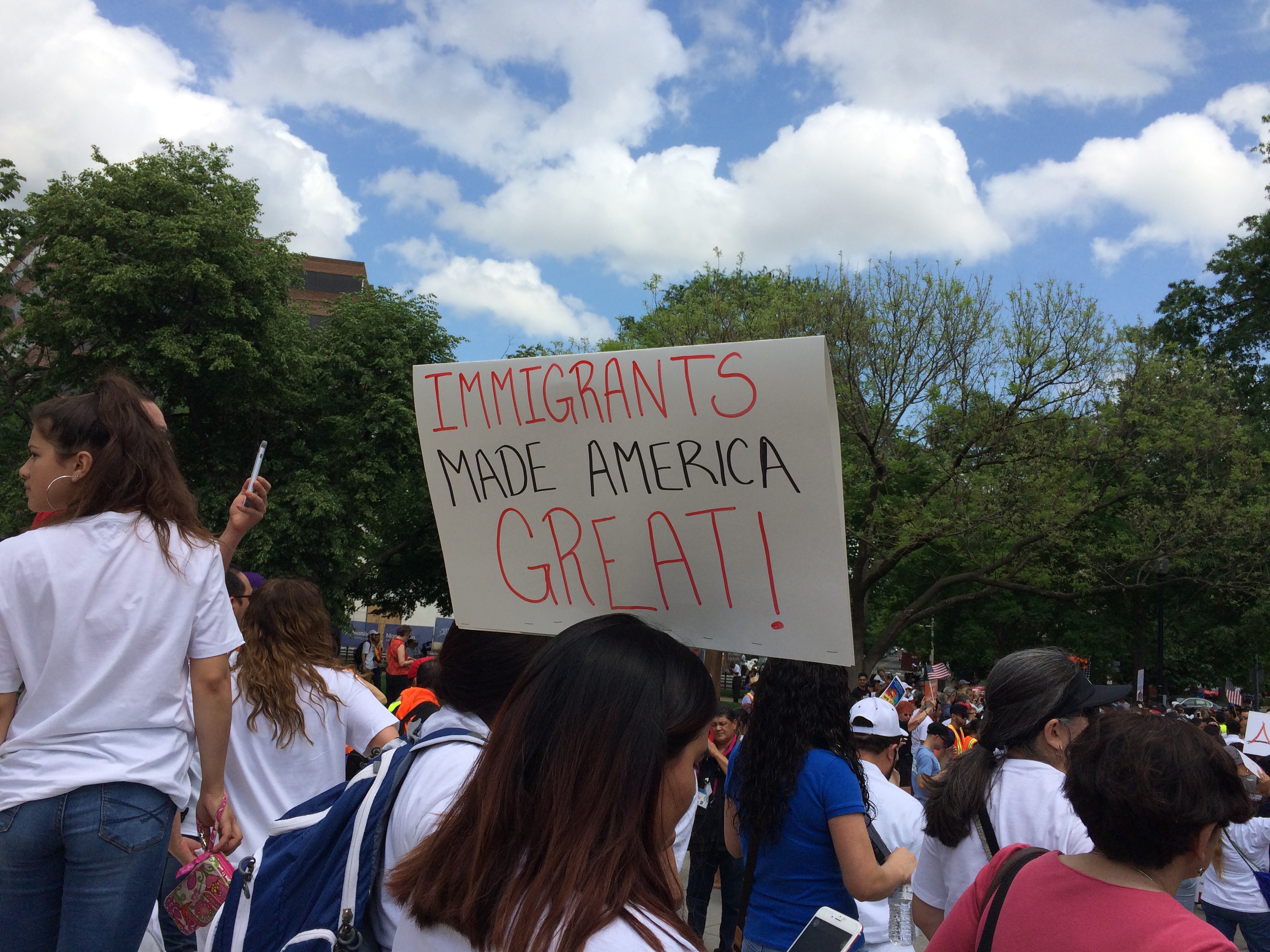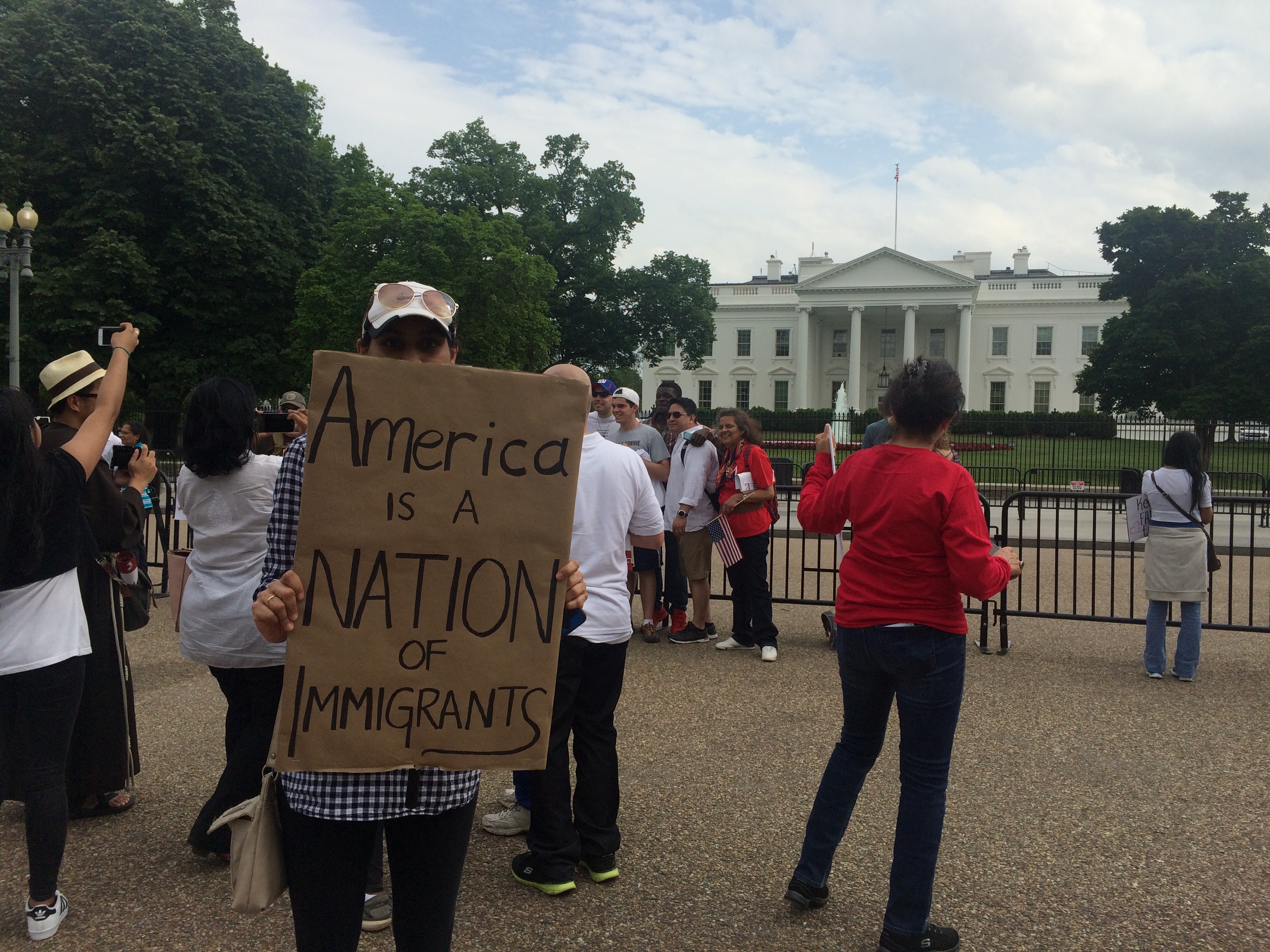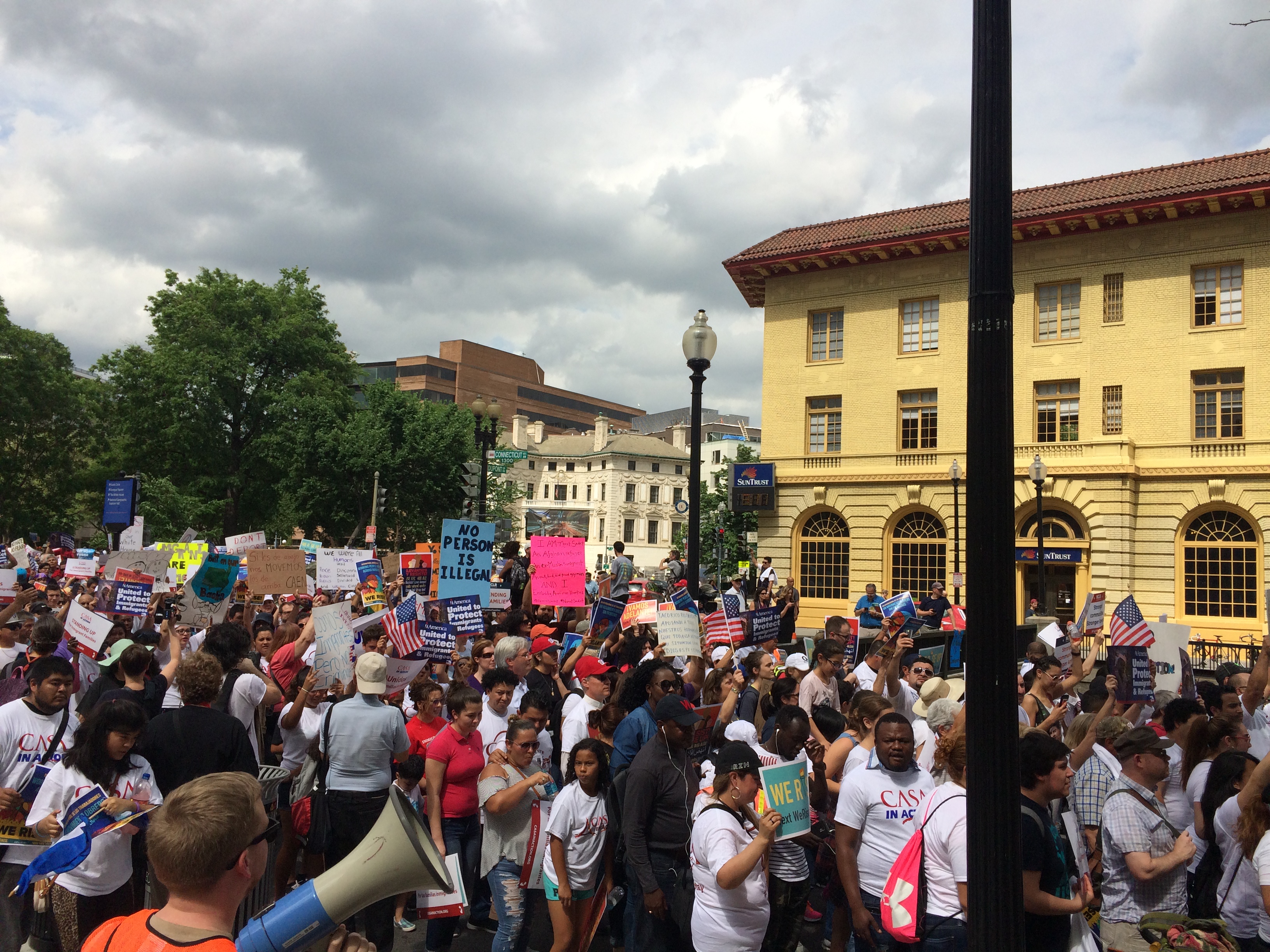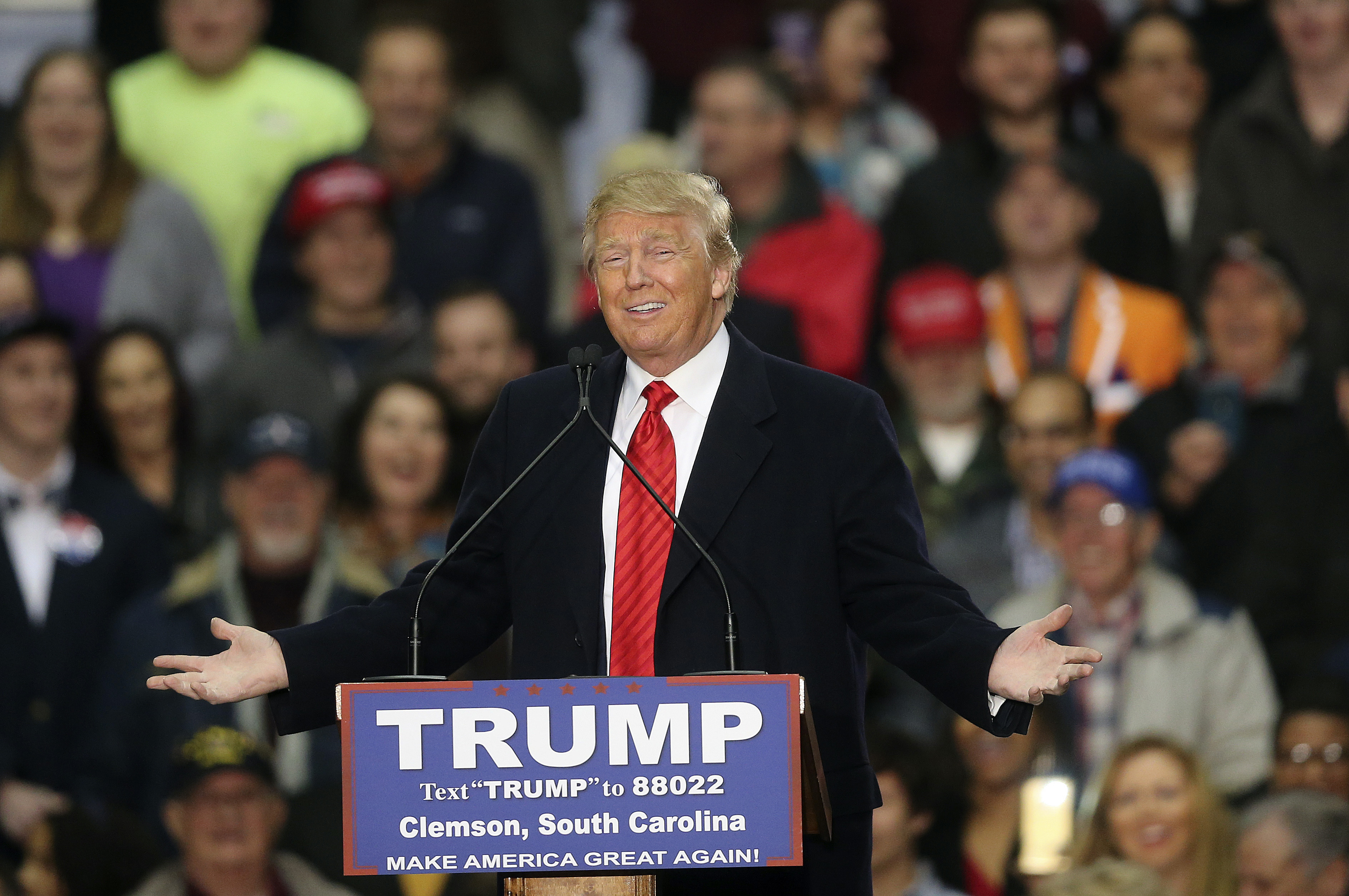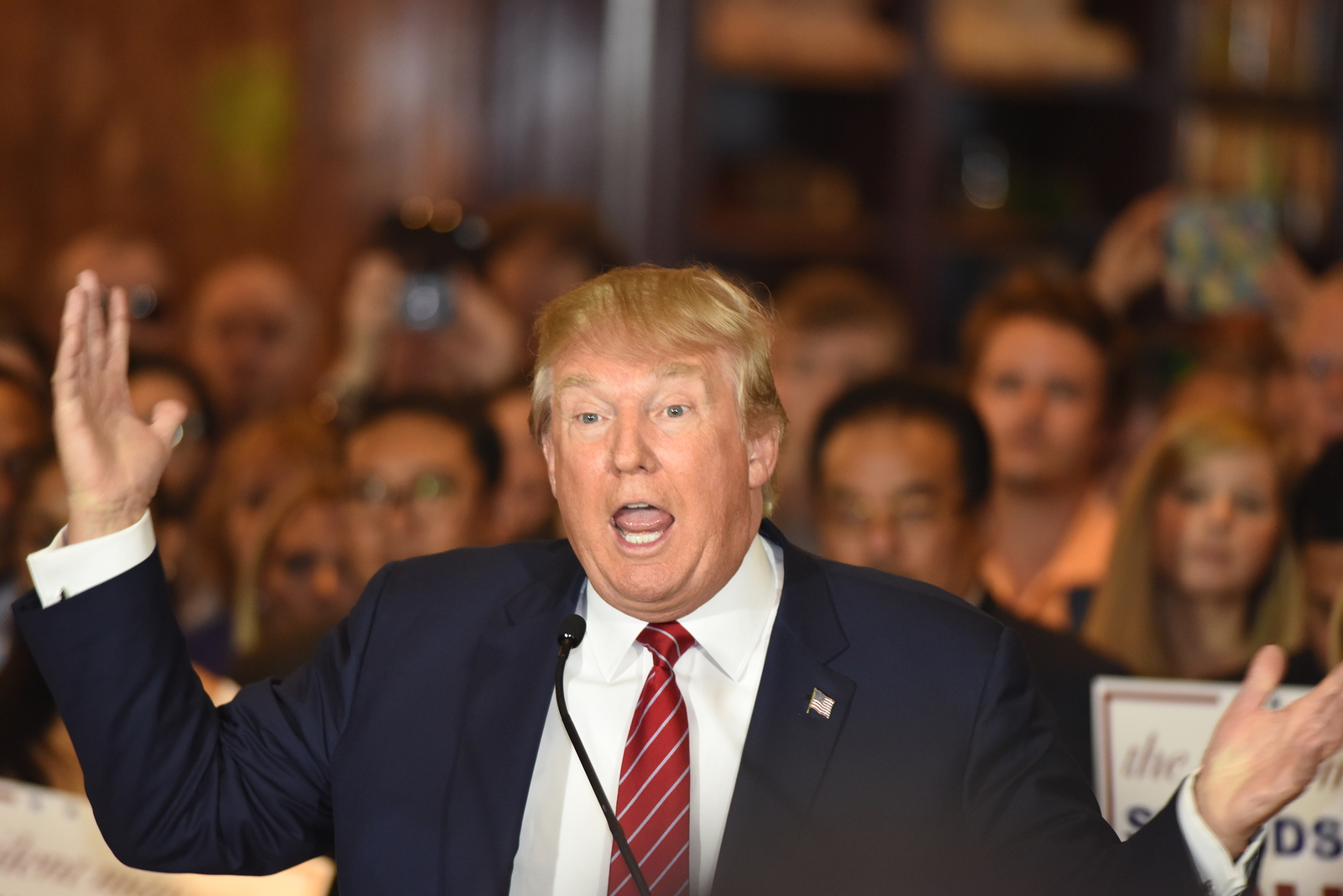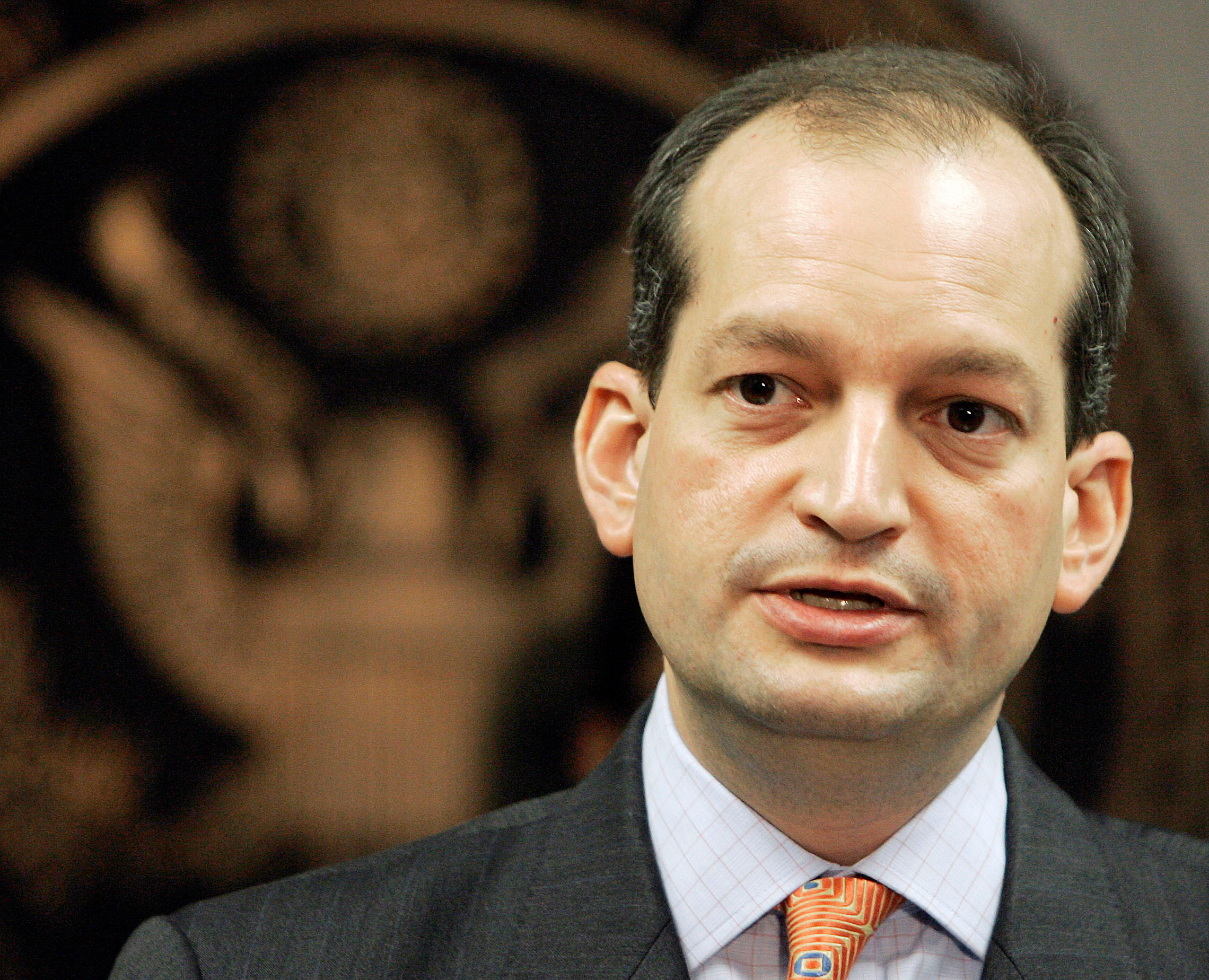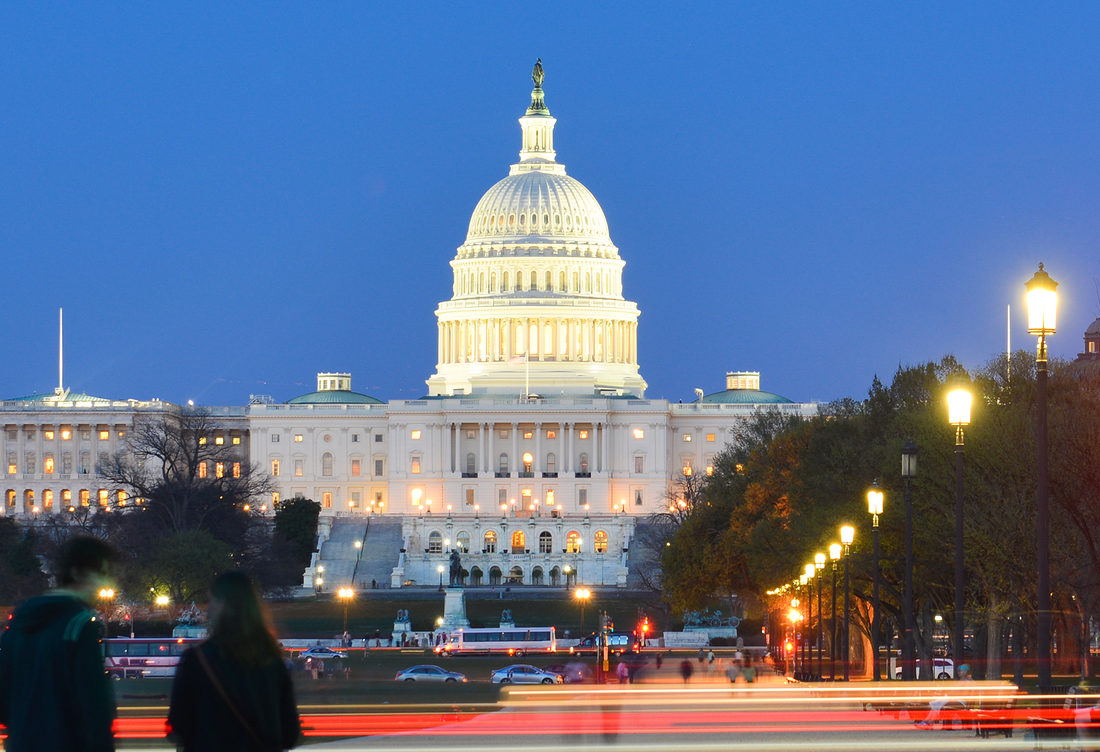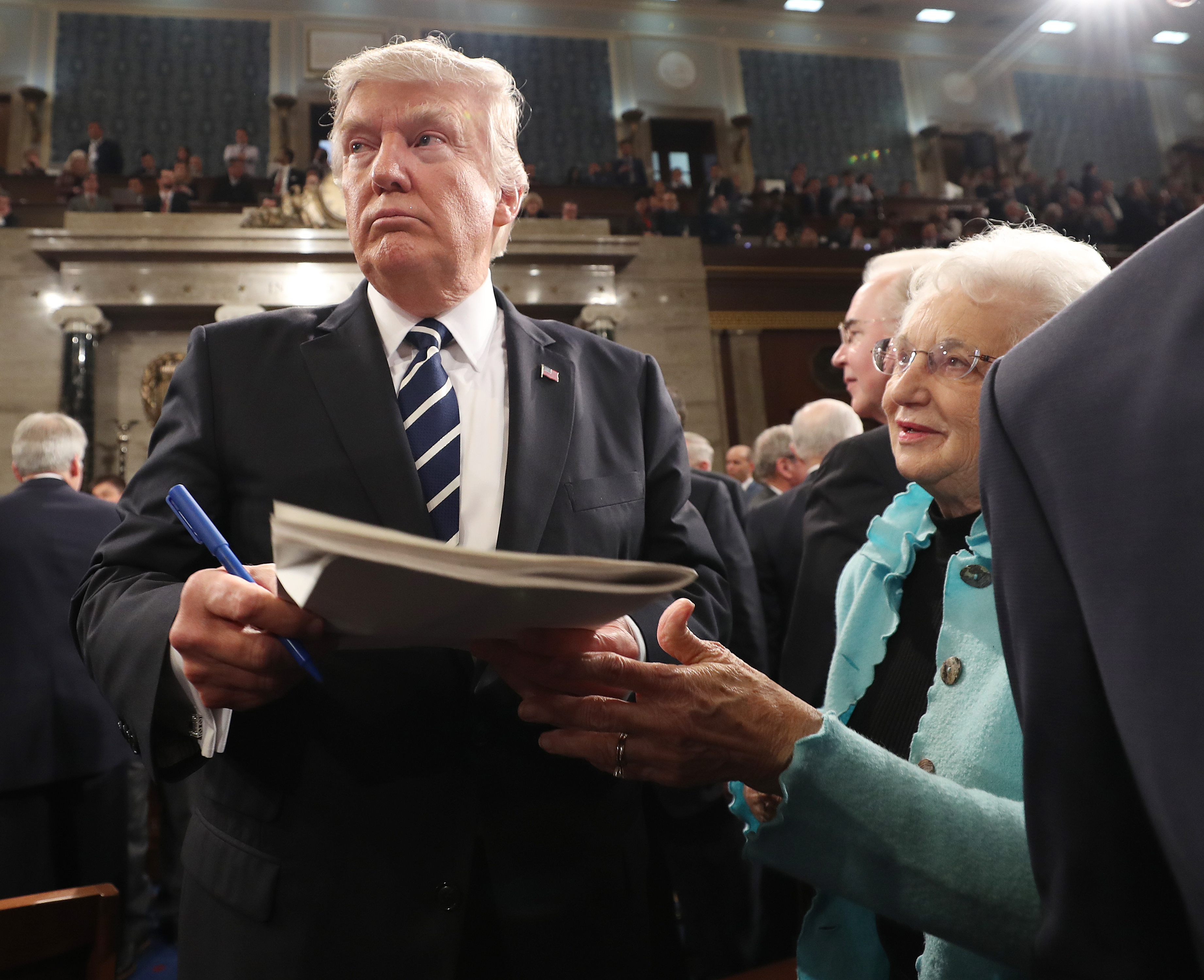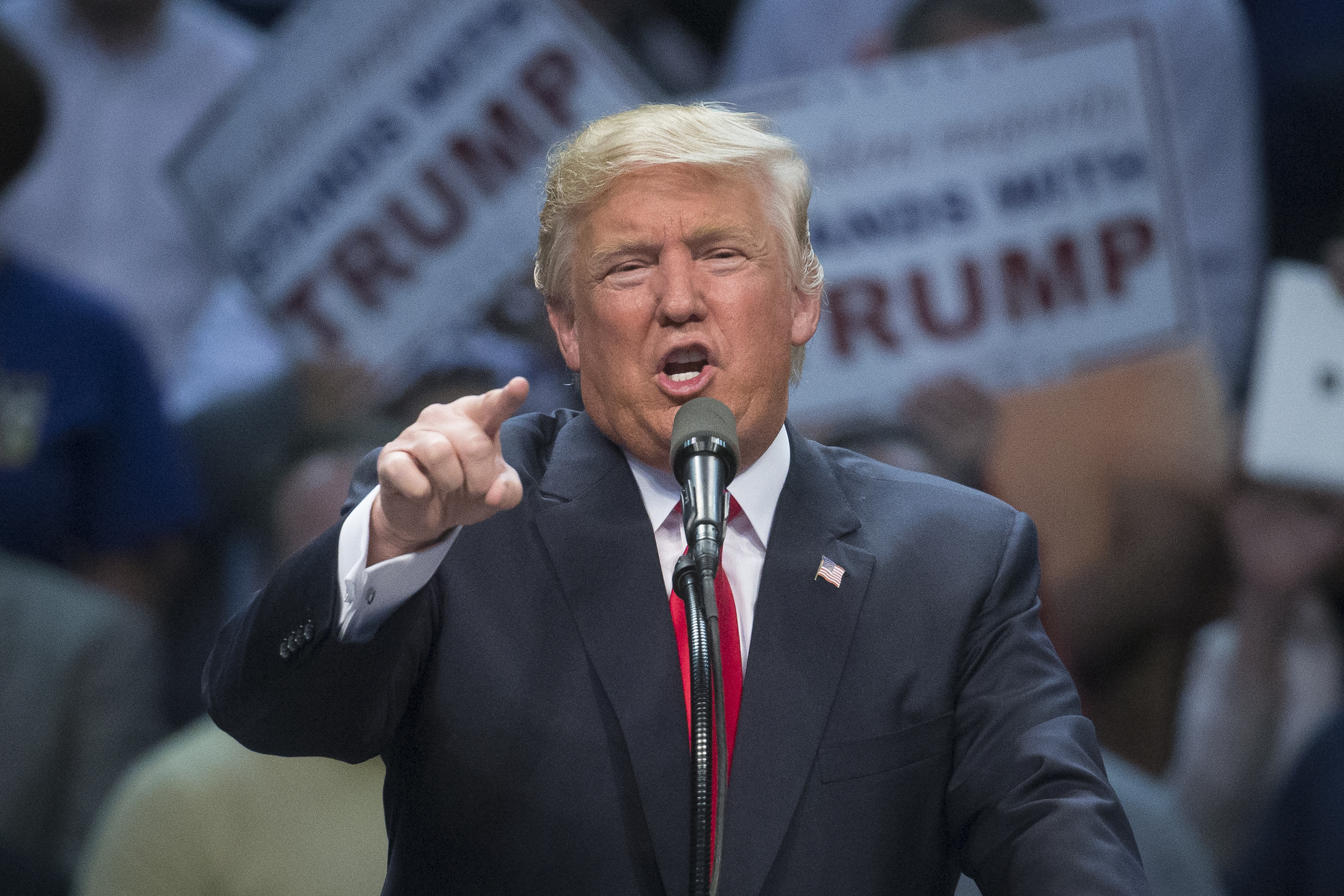
Republican President Donald Trump and labor unions have had an interesting relationship–one that has become even more complicated since he took office.
Trump was able to secure a surprising number of working class districts with his focus on labor issues. His stance has set him apart from many others on the right. But his relationship with unions tends to be complex, as labor and the president balance their political views, what union members think, and the president’s background as a businessman.
Trump continues to face strong opposition from union leaders despite support from union members. Republicans and the labor movement have had a contentious relationship for decades, with labor long being closely aligned with Democrats.
“Labor doesn’t love him. In some ways they hate him because he’s beating them,” Prof. Richard Vedder, who teaches economics at Ohio University, told InsideSources. “But on the other hand, deep down, I think he’s one of their kind of guys at the same time. It’s sort of a contradiction.”
Trump has made the working class a central focus of his presidency. He promised to help workers by bringing back manufacturing and other traditional jobs. His rhetoric resonated with many private-sector workers, including in districts that have strong liberal and union influences.
“Many of the working class union members voted for Trump over the opposition from union leaders,” Michigan State University Prof. John Beck told InsideSources. “The union leaders are going to have to walk a fine line when it comes to not wanting to be so on the other side of their members.”
Labor unions helped organize national protests and grassroots campaigns against Trump. The National Institute for Labor Relations Research (NILRR) found in a recent report that labor unions spent $1.7 billion during the last election. Their efforts weren’t enough, however, when election day finally came this past November.
“They endorsed the Democratic candidate and the members went their own way, and in many cases ignored the leadership and voted for Trump,” Maria Hylton, an employment law professor at Boston University, told InsideSources. “That has to be something that the leadership in the unions are paying attention to.”
Indiana University Southeast Prof. Eric Schansberg adds there’s a clear distinction between union leaders and members that can account for the different viewpoints. He notes union leadership portrays the united front while membership has more diverse opinions that are more personal to their situation.
“They have to be careful,” Schansberg, who teaches economics, said. “The more popular he is, the harder it is for the leadership to take a stand away from that because they stick out like a sore thumb. To the extent that he’s unpopular, then if they don’t like him, it becomes easier for them to talk about that.”
Union membership veering from leadership likely played an important role on Election Day. The working class generally helped push Trump to victory. He was able to connect to those voters on a personal level during the course of the campaign.
“There’s no question that there was frustration within different parts of the labor movement at the base,” said Beck, who teaches labor policy with a particular focus on collective bargaining and unions.
Beck adds workers have experienced flat wage growth and decreased opportunities over the years. Workers are increasingly seeing their skills becoming obsolete in the face of emerging technologies. The president argued when launching his campaign that the government has failed both workers and employers.
Trump is not typical in that he takes elements from both sides of the aisle to promote his worker-focused agenda. He sides with many others on the right on issues like regulations and taxes, but has taken a more progressive tone on issues like trade and entitlements.
“Trump is not a typical Republican based on past standards,” Vedder said. “Most Republican presidents and candidates for president have taken stances that are almost diametrically opposed to those of labor unions.”
Trump has been willing to break with his own party on a range of issues. He also has some viewpoints that overlap with those of the labor movement. His view that trade should prioritize domestic workers echoed concerns expressed by unions leaders for decades. He has also gained support for his stance on manufacturing and energy.
“By and large he has not taken on a strong anti-labor agenda or one that would be viewed as anti-labor by the labor unions,” Vedder said. “Similarly you see that at the Department of Labor.”
Trump received some union praise over his decision to withdraw from the Trans-Pacific Partnership (TPP). The trade deal had drawn fierce criticism during the campaign. Labor unions have contested it’s designed to enrich corporations and other special interests at the expense of workers.
“I think the unions are probably, especially the ones in the manufacturing sector and coal, are probably excited at the prospect of someone coming in and reversing this decades-long decline in jobs,” Hylton said. “On the other hand, I suspect that they’re a little doubtful of his ability to get some of these things done.”
Hylton adds the administration actually hasn’t done much with labor thus far. Republicans and the administration have been more focused on healthcare and taxes in recent months. Regent University Prof. Bruce Cameron counters the administration and unions aren’t as alike as some believe.
“There may be some small practical areas where they might agree with Donald Trump,” Cameron, who teaches law with a particular focus on labor, told InsideSources. “But they fundamentally disagree. They’re collectivist, they support liberal points of view on everything. It would seem to me there’s no common ground.”
He adds a lot of those policy agreements they have discussed have been vague and abstract. The issue is whether the administration can actually implement reforms that unions support. They might both agree trade should prioritize domestic workers, but that doesn’t mean they will agree on how to best do that.
“I don’t see anything in his policies that could be labeled liberal,” Prof. Richard Hurd, who teaches and writes on labor relations at Cornell University, told InsideSources. “His rhetoric indicates that he’s very interested in helping working-class people, but none of his policy proposals are viewed by the labor movement as friendly to workers.”
Labor unions seemed to oppose Trump on a personal level at times. They were among those groups that accused the president of inciting hate during the election. AFL-CIO President Richard Trumka even called him the most racist presidential candidate ever. Other unions expressed similar viewpoints.
“There’s probably two kinds of resentments towards Trump,” Ohio University Prof. Richard Vedder said. “There’s probably some people who think of him as a rich man who thinks he knows it all. I suspect there is some of that. And I think there is a lot of frustration in the labor movement because they spent a lot of money trying to get Hillary Clinton elected.”
Vedder adds unions have been facing long-term challenges that might be fueling their resentment. Unions have been slowly losing members and influence in recent decades. The Bureau of Labor Statistics found union membership fell from 20.1 percent in 1983 to just 11.1 percent by 2014.
Trump and the labor movement have a relationship that predates his entrance into politics. His hotel and real estate business had him dealing with a range of construction and service unions. Hurd notes that experience might very well shape how he deals with unions throughout his presidency.
“He does have a history of working with unions and cutting deals with them when negotiating arrangements with both the hotel employee unions and construction unions,” Hurd said. “If he ends up tilting towards his experience in that regard, and is willing to negotiate in ways that are beneficial to workers, and that he feels like he’s benefiting, we could end of seeing a reasonably productive relationship, at times, with the labor movement.”
Trump International Hotel Las Vegas became embroiled in a labor dispute just prior to the election. The Culinary Workers Union Local 226 and the Bartenders Union Local 165 had tried to unionize the hotel. The dispute lasted for over a year but finally ended in an agreement just a month before Inauguration Day. Trump was campaigning through most of the dispute.
“His background as a developer means he is very familiar with private labor unions,” Center of the American Experiment Vice President Kim Crockett told InsideSources. “Plus he has signaled that he wants to speak for and look out for the ‘little guy,’ which in some cases means people who are in the trades.”
Trump has garnered some union support despite the general opposition from labor leaders. The National Border Patrol Council (NBPC) made its first-ever presidential endorsement last year in favor of him. He has also received praise from construction and energy sector unions for his support of pipeline and infrastructure projects.
“Now that subset of the construction unions that like him, or at least indicated a willingness to work with him, are in line with his views on energy,” Hurd said. “It’s a portion of the labor movement that has feuded with the environmentalist movement.”
The Laborers’ International Union of North America (LIUNA) and other unions praised a decision by the administration to relaunch construction of the Keystone XL and Dakota Access pipelines. The president called the pipeline the first of many infrastructure projects during his announcement. The $8 billion project is expected to create thousands of jobs.
“You have a number of construction unions, which he is playing very strong with,” Michigan State University Prof. John Beck said. “The problem that you have is this is probably the same administration that is going to turnaround and try to get rid of Davis-Bacon and federal prevailing wage legislation.”
The Davis-Bacon Act of 1931 established prevailing wage requirements for public works projects. The prevailing wage dictates what the majority of workers must be paid while working on government contracts in particular regions. It makes it more difficult to compete with construction unions through reduced costs.
“He invited a group of union leaders to meet with him early on,” Hurd said. “It involved a bunch of construction unions. Not all the construction unions, but a core of them, including the head of the North America’s Building Trades Unions.”
Indiana University Southeast Prof. Eric Schansberg notes it’s also important to make a distinction between private-sector and government unions. Trump did well among private-sector workers, but not so much among government workers. The labor movement, however, nearly evenly split between public- and private-sector union members, with a much higher rate of union membership in the public sector.
“When people talk about unions, they’re really talking about, in my experience, they’re really talking about a certain, fairly small segment of union membership,” said Schansberg.
The Bureau of Labor Statistics (BLS) reported that the union membership rate stands at 34.4 percent for public-sector workers, but only 6.4 percent for private. Schansberg adds even that small segment throws around a lot of weight in the trade and immigration debates.
“With private labor unions, you have profits to bargain over,” Crockett said. “With government unions, there are no profits to bargain over, just more tax dollars and political power to commandeer. The union money in the political cycle warped our political discourse, our representative democracy, and disenfranchised voters.”
Trump is going to determine much of his labor agenda by who he appoints to oversee the national workforce. Alexander Acosta was confirmed last week to lead the Department of Labor (DOL). CKE Restaurants President Andy Puzder was originally nominated for the position by eventually dropped out.
“His first announced nominee for the secretary of labor was widely opposed to the labor movement,” Hurd said. “When he eventually withdrew, the second nomination was less of a lightning rod and less problematic, although I understand unions weren’t terribly happy with his testimony when he was being vetted for approval.”
The National Labor Relations Board is another place the president will soon have to appoint new members. Bloomberg BNA reported recently that he is currently considering labor lawyers Marvin Kaplan and William Emanuel. The board helps resolve labor dispute cases. Former President Barack Obama instituted much of his economic agenda through department regulations and board decisions.
Trump and unions could see their relationship evolve even further over the next four years. They could become even further opposed or find more common ground. Schansberg, however, doesn’t see anything at the moment that indicates their dynamic will change anytime soon.
“I think in terms of leadership, it’s going to be about the same in four years,” Schansberg said. “The voters will be in about the same spot, and I think the leadership will not like Trump because he’s not going to do enough things to move the needle for them.”
Schansberg adds the working class may likely judge the president based on whether they believe he is actually trying to help, and not necessarily based on his accomplishments. Beck notes his success and ability to garner working class support might determine how friendly unions are in the future.
“The leadership is going to be willing to be part of anytime there’s a photo opportunity that may very well lead to jobs or at least the possibility that organized labor can be at the table,” Beck said. “You can be sure that they’re going to be in those discussions. That does not mean they trust him, nor are they going to back him.”
Follow Connor on Twitter
Subscribe for the Latest From InsideSources Every Morning









